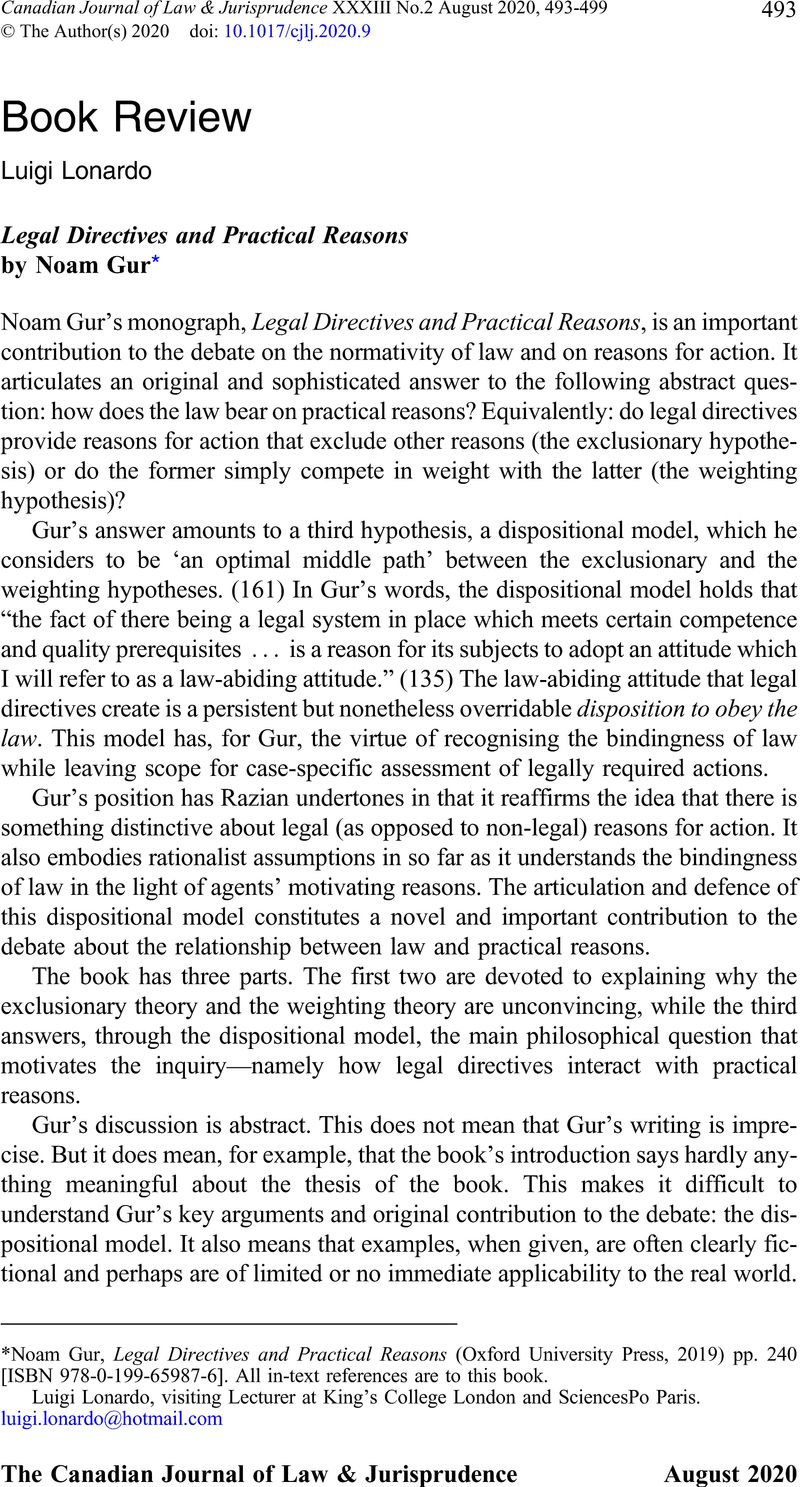No CrossRef data available.
Article contents
Legal Directives and Practical Reasons by Noam Gur
Published online by Cambridge University Press: 10 June 2020
Abstract

- Type
- Book Review
- Information
- Copyright
- © The Author(s) 2020
Footnotes
Noam Gur, Legal Directives and Practical Reasons (Oxford University Press, 2019) pp. 240 [ISBN 978-0-199-65987-6]. All in-text references are to this book.
References
1. I will discuss this more in the section below.
2. Joseph Raz, The Morality of Freedom (Clarendon Press, 1986) at 46.
3. Gur states that the book will concern itself with “factors that speak in favour of the action” not with “the motivation or consideration that made a difference to how the agent acted.” (8)
4. Jon Elster, Explaining Social Behaviour, 2d ed (Cambridge University Press, 2015) at 70.
5. Ibid .
6. The line immediately after the quotation bears no relevance to this second claim, and I have indeed discussed it with relation to the first claim.
7. The book also addresses two counter-objections to its critique of the exclusionary theory. Perhaps the law that is being disobeyed was not a legitimate authority (the no-authority reply, Chapter 3); or perhaps the reasons for disobedience were not impacted by the law (the scope-of-exclusion reply, Chapter 4).
8. See below for a discussion of the dispositional model.
9. Raz, supra note 2 at 53.
10. For a similar criticism see Elster, supra note 4 at 27.


